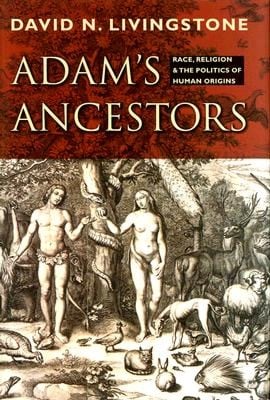
Today I wrap up this series on David N. Livingstone’s book, Adam’s Ancestors: Race, Religion, and the Politics of Human Origins. In Chapter 9, Dimensions: concluding reflections, Livingstone ties together several themes running through his book. For our purposes today I would like to consider one of these – concordism and the role of concordism in our understanding of the relationship between science and scripture.
Concordism expects a concord, an agreement between claims of scripture and reality. On one level I am a concordist – for example I believe that the historical and theological claims relating to the life, death, and resurrection of Jesus match reality. There is a historical and a theological concordance with reality.
But is concordism the right approach to all of scripture? When and at what level is agreement to be expected?
When it comes to Genesis 1-4 I am not a concordist … or am I? Perhaps the line is not so clear. I certainly don’t think that the purpose of Genesis One is to teach cosmology, history or science. Concordist approaches – finding modern science in the ancient text – seem deeply flawed. On the other hand an accommodationist view – that God “accommodated” his message to the knowledge and understanding of the day has problems of its own. Some find these problems particularly apparent in the issues such as Adam and Fall, the image of God and the soul. Both traditional concordist and accommodationist views seem to miss the target in understanding the nature of this Scripture passage as “God-breathed.”
Taking a slightly different look at the problem, as Christians we expect a concord between the teaching of
scripture and reality. One of the difficulties is that the
teaching of scripture can take many forms…poetry, story, proverbs,
history, prophecy, apocalyptic imagery and more. These forms are molded
in time and place – not only by the world view and knowledge of the day
(ANE cosmology for example), but also by the literary forms at work in
the culture. Neither concordism nor accommodation seems to provide the
correct nuance of understanding and approach.
In the history of the development of thinking about pre-adamite man the concept wavered between a defense of the authority of scripture and a challenge to the authority of scripture. By and large, however, pre-adamite man is a concept that was and is embraced to keep faith with both science and scripture. Livingstone suggests that the investigation of the history of pre-adamism sheds light on concordism and the role of concordism.
As such it [pre-adamism] discloses something about the general nature of concordist proposals. By working to preserve the peace between science and theology, it is not so much that pre-adamism acted as a conceptual bridge between two discrete spheres of knowledge and belief. Rather it functioned as a kind of mold that sculpted both scientific commitment and theological conviction into a distinctive shape. Harmonizing schemes are not to be thought of as passively zipping together two disparate sets of beliefs. They are, rather, agents actively fashioning both scientific theory and religious doctrine into new forms. … Harmonizing strategies are thus rarely single-unit ideas; rather, they are conceptual systems – packages of ideas – that transform the very notions they seek to unite. (pp. 220-221)
Livingstone’s insight – that there is always a package of ideas that
transform the notions they seek to unite – is worth serious
consideration. Every Christian thinker has wrestled with scripture and the story of scripture in the context of a day and age. Perhaps this two way street – with scientific theories informing and transforming doctrine and doctrine shaping the view of science is the normal, natural, God ordained approach. We read Augustine, not to see threads of modern science in his thought, but to see how he wrestled with the common knowledge of his day and the story of scripture. We read Aquinas, Luther, Calvin, Warfield, and Ramm, and see how they wrestled and thought, achieving a harmony between what they saw in scripture and what they knew from the world around them.
Paul told Timothy that scripture is God-breathed, but it is in the context of a statement that defines a purpose for scripture. It gives “wisdom that leads to salvation through faith which is in Jesus Christ” and it is “profitable for teaching, for reproof, for correction, and for training in righteousness.” I suggest – and put out for discussion – the idea that both the concordist approach and the accommodationist approach miss the point. They fail to wrestle fully with the nature of scripture, its purpose and its form.
I’ve rambled somewhat here – but would like to conclude with a question or two and open a discussion.
What role do you think harmonization should play in our understanding of scripture? At what level should we expect a concord between science and scripture?
If you wish to contact me directly you may do so at rjs4mail[at]att.net.

